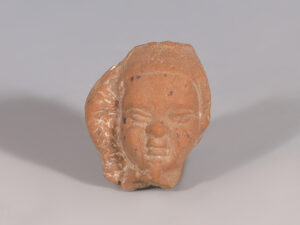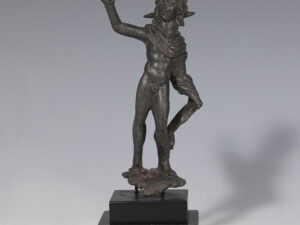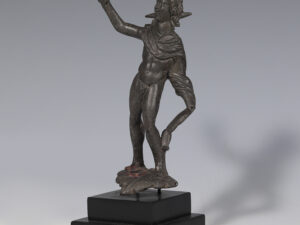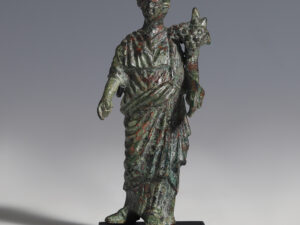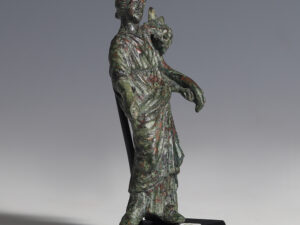In Ancient Roman mythology, Hercules (or Herakles in Greek culture) was famed for his strength, as well as for his far-ranging adventures. Together with the lion skin, the club was the main attribute of Hercules, conveying his exceptional strength and success against the odds. Widely considered to be the greatest of Greco-Roman heroes, Hercules is often depicted with a heightened masculine physique. As punishment for the frenzied killing of his family, Hercules was ordered to undertake twelve labours, a feat which became his most notable tale. One such task was the conquest of the Nemean lion, whose pelt became a staple in Herculean depictions. Its absence here communicates Hercules’ youth, as he has yet to encounter this challenge.
Hercules’ rugged depiction belongs to a common heroic archetype in antiquity characterised by physical strength and animalistic traits, but also striking humanity. Precedents include the Mesopotamian heroes Gilgamesh and Enkidu, who embody the notions of the ‘civilised’ and ‘animalistic’ hero respectively, and communicate an ancient fascination with the duality of man as well as mankind’s position among nature and divinity.
To find out more about Roman gods, please visit our relevant blog posts: Roman Gods in Mythology.







